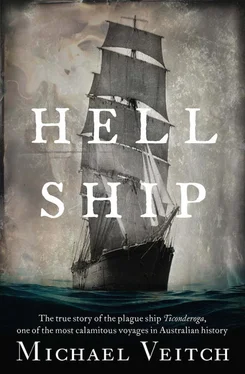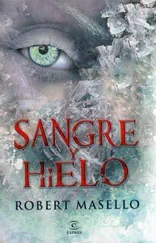In the end, the grandson of a deposed and long-dead king would prove no match for the warrior son of a reigning monarch. Earning his sobriquet ‘the Butcher’, Cumberland carried out the orders given by his father, King George III, and saw to it that no clansman was left alive on the battlefield of Culloden. Dead and wounded were thrown together into pits and buried, dead or alive.
Thus began the pacification of the Highlands. In an indication of the depth of the shock felt by the Hanoverians at the Jacobin uprising, Cumberland embarked on a sustained and cold-blooded campaign, hunting down clansmen like dogs and eradicating Highland culture root and branch. The tartan was outlawed; the pipes forbidden. Roads were now policed and those caught speaking Gaelic were punished by imprisonment or death. With the passing of the Heritable Jurisdictions (Scotland) Act , the Highland chiefs were stripped of their powers, and eventually the entire clan system, which had evolved over a thousand years and formed the bedrock of Highland society, was smashed forever.
Worse even than this treatment at the hands of the old enemy, the English, however, was the betrayal by their own. Warlords no longer, the estate-owning lairds of southern Scotland—upon whose largesse and sufferance tens of thousands of tenant farmers had relied for centuries to eke out some kind of living on their tiny plots of fertile land, decided to cash in their centuries-old traditions and become rich.
Since as long as anyone could remember, in a system that had evolved little since feudal times, the land-owning gentry had sub-let their vast estates to tacksmen, who in turn leased ‘tacks’ or strips of fertile land collectively to the farming families of a village or town. The system, known as run rig, had served Highlanders for generations. The rent gathered from those at the bottom of the pyramid was, however, small, sometimes pitifully so. And while in previous times, the landowners had been happy to count their assets in numbers of loyal clansmen willing to wield a broadsword in their name, their desires from the mid-1700s became decidedly more worldly.
The landowning Scots quickly began to dissociate from the rough ways of the Highlanders. They married pretty English wives who preferred a townhouse in Belgravia to an estate in the glens, and who chose to venture no further north than a ball at a wealthy home on the outskirts of Edinburgh. They affected English manners, courted English friends and agreed with them that the Gaelic, after all, had always been a barbarous tongue for a barbarous people.
For it was now, towards the end of the eighteenth century, that the demand for meat, followed by the demand for wool, would transform the Highlands, draining the land of its ancient people forever. It was called ‘the Clearances’, and it would spell the death of Highland culture. The weapon deployed in this long and deliberate campaign of human catastrophe was the humble sheep.
There had, of course, always been sheep in the Highlands: small things kept in modest flocks, producing milk, small amounts of fine wool and, occasionally, tough mutton. They were thin and delicate creatures, unable to survive the harsh Highland winters, at the beginning of which they were brought down from their grazing places on the slopes to the lower, more protected climates. Often, they would over-winter with the tenant farmers themselves, man and beast under the same roof, in a way that later revolted outsiders.
Then, in the last years of the 1700s, came the time of the Cheviot, the Great Sheep. Named after the bitter hills running along the border of England and Scotland among which it was bred, the Cheviot was a man-made super sheep, producing one-third more wool and meat than the common blackface or Linton. It was also relatively disease free and could survive the harsh Highland winters that, insisted the locals initially, not even the strongest stag could bear.
Suddenly, land that had quietly supported a few hundred Highland families in a manner that remained unchanged for centuries was worth a fortune. Attention was directed towards the Highlands and its inhabitants as never before. The fear and loathing felt by a previous generation now gave way to pity and contempt for their squalid way of life, their dismal huts of sod and stone, their wooden ploughs, their paltry crops of oats and potato, their rough stills and bitter beer, their refusal to modernise, their stubborn beliefs in witches, faeries and other superstitions.
On their chestnut geldings, English and southern gentlemen—the industrious as well as the curious—made forays into the Highlands, notebook in hand, cursing the lack of roads and the absence of a decent inn. They rode up the river banks and into the villages, marking down every fertile valley and verdant hillside they could find along the way, tut-tutting as to how these people could be so immune to the wondrous progress of modern Britain. For their own sake, it was decided, they must—by force if necessary—be brought into the modern world, if only to liberate them from their own backwardness. Improvement became the moral imperative, and it was a subject not open for debate.
Driven from the south in massive flocks before southern Scots and English shepherds, the Cheviot came up the old cattle roads and crags to feed on the cotton grass and the alpine plants. They poured into glens and towns and villages like a bleating white river. To the landowners, armies of agents now offered previously unheard of rents. The only thing standing in the way of this tide of modernisation was the people.
The Napoleonic Wars, coinciding with the advent of the factory system and the new English industries of the early nineteenth century, brought the demand for wool to a crescendo. Public land was enclosed, fences appearing where none had existed before.
Unlike in some European countries, such as Switzerland, the rights of peasant tenants in the Highlands were not guaranteed. Even in England, the agricultural labouring classes had some hold on their tenure. Not so in Scotland. Families that had lived and died on the same plots were now handed eviction notices and ordered to leave. Many still spoke only the Gaelic and as they gathered as a village to listen to what these strangers from the south—the agents, the factors and the sheriffs—read to them, they could not understand a word of it. When they finally did, they could not believe what they were hearing.
Peacefully at first, the bewildered Highlanders accepted their lot with resignation. They were given the chance to dismantle their ancient wooden homes piece by piece and transport them to one of the new plots promised to them in a different part of their lord’s estate. These were usually on the wild coast or in the Western Isles, where they would now be forced to learn new ways of life as herring fishers or kelp harvesters—trades about which they knew absolutely nothing. Better still, they were told, a berth was always ready for them on one of the emigrant ships waiting in Greenock to take them to far-away America, Canada or, later, Australia. Many of the landowners were so keen to be rid of their people that they paid their fares, up front, no questions asked.
As surely as the native inhabitants of Australia and America were dispossessed in the name of progress and industry, so too were the Highlanders of Scotland, forced out by the sheep farmer colonists, and their so-called four-footed clansman of the Highlands: the Cheviot.
In the first decades of the nineteenth century, as landowners began to taste the riches that ridding their lands of people and converting them to sheep pastures could bring, the Clearances accelerated both in scope and bitterness. Land that had been worth pennies per acre to the gentry now yielded shillings and pounds. Yet the people were not leaving fast enough.
Читать дальше












